The Strengthened Inner German Border
The border defences were initially inadequate for preventing escape and were, to all intents and purposes, symbolic.
However, in weak areas (popular with escapees), patrols were increased, guard towers installed and badly installed fencing reinforced.
The numbers of 'Grenzpolizei' (border police) increased and, in some areas, a dirt patrol road was built to allow the guards to respond more quickly.
All these factors made the border increasingly difficult and dangerous to cross.
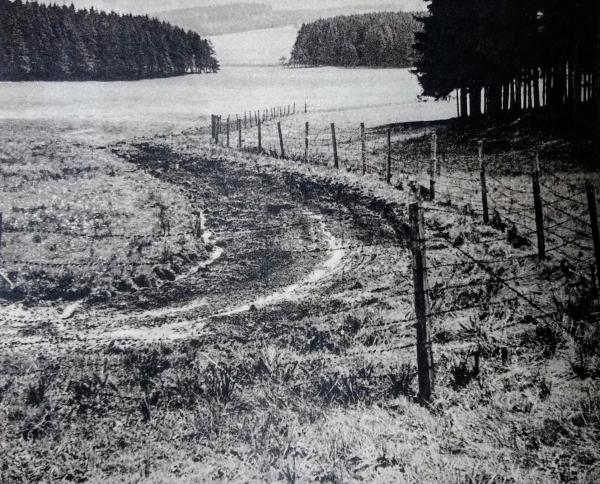
This section of the zonal border is only a few kilometres from the Czech frontier - however, the strip and fence continued along the DDR/Czech border
It is easy to see how a potential escapee, chosing a suitable time & place, could cross to the West
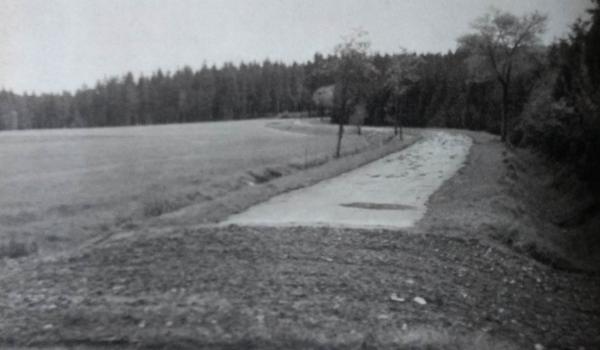
Like the track of a giant snail 'Pieck Avenue' wends its way from Lübeck to Hof
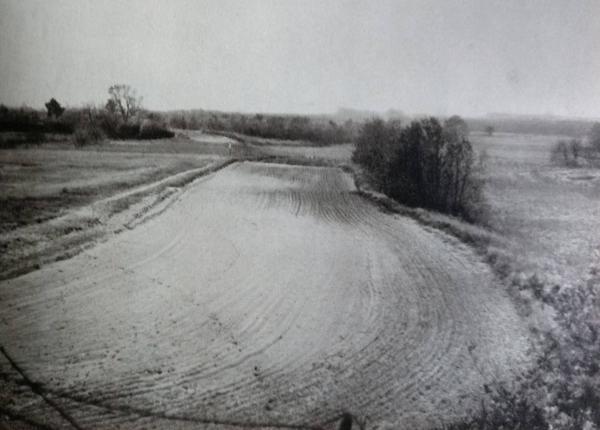
Tracks across the harrowed control strip show that crossings have been made at this isolated location
This was the main purpose of the strip - to show where & when crossings had been made (and to inform improvements)
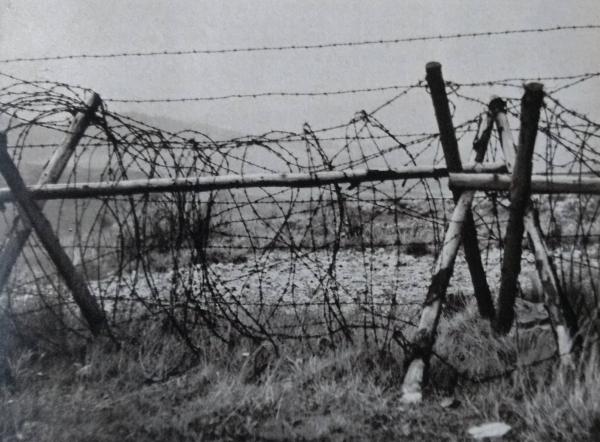
The wire, the barricades and the ploughed strip - but requiring constant observation to be effective
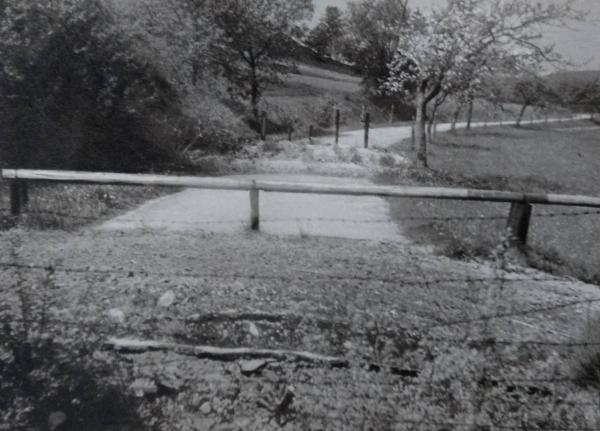
The closed B69 near Burggrub in the Kronach district - barriers, trenches, barbed wire and patrols
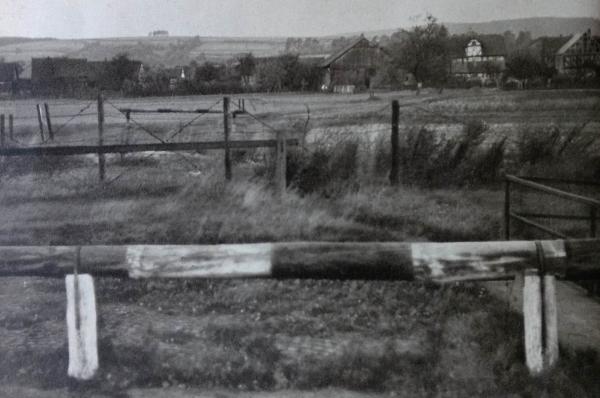
Only 150 metres separate Kleinsee (in Hesse) and Grossensee (in Thuringia) but contact beween the two villages is now impossible
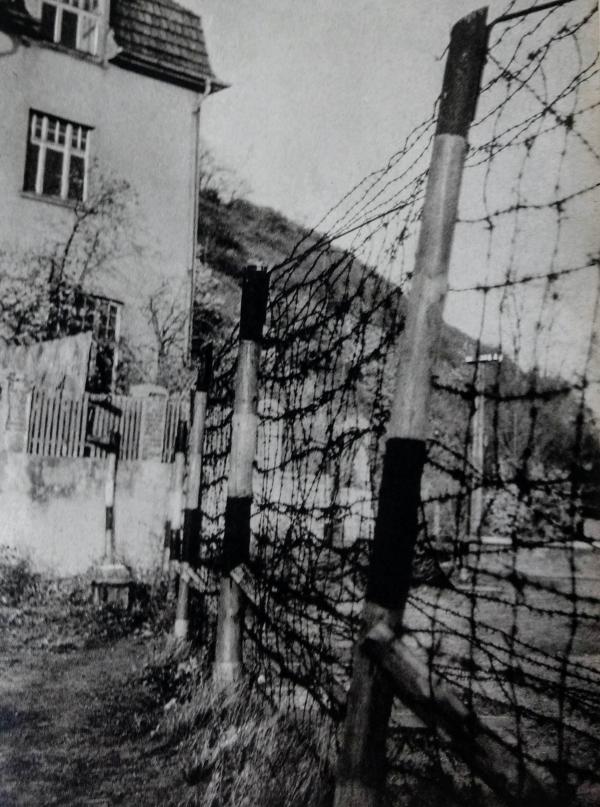
One of the most visited locations was the Hossfeld printing works in Philippstal where the border cut through a house
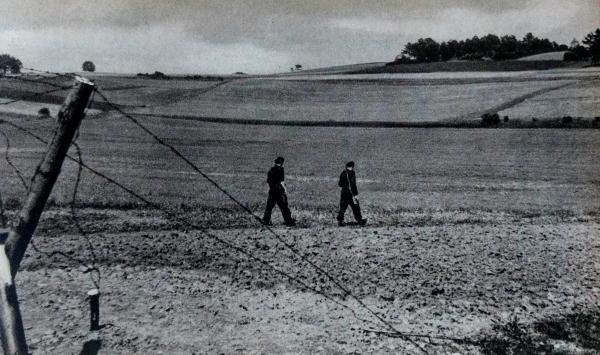
A DDR border patrol - they not only observe the border but watch each other
Note the poor condition of the barbed wire fence
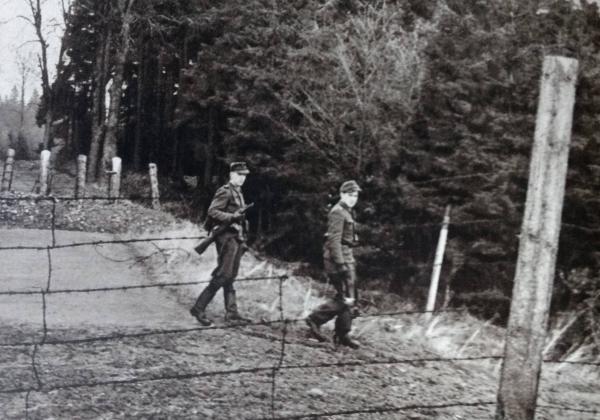
A border police patrol next to a road barricade in the Franconian forest between Nordhalben - Lobenstein
Note that vertical barbed wire ties have been added to prevent the horizontal strands from being spread apart
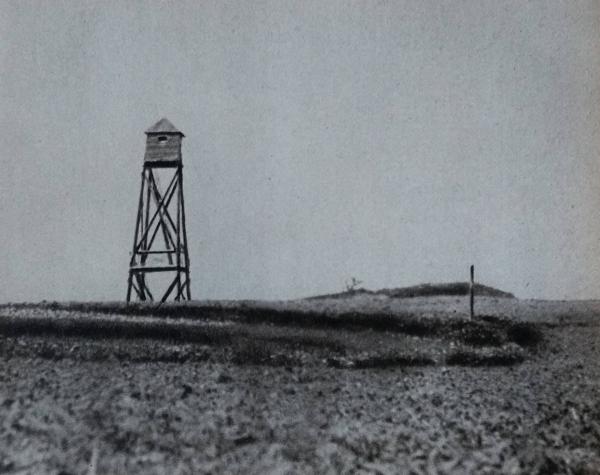
A border police watch tower in a rural area near Hof - these were constructed to monitor an area that had become a popular escape route
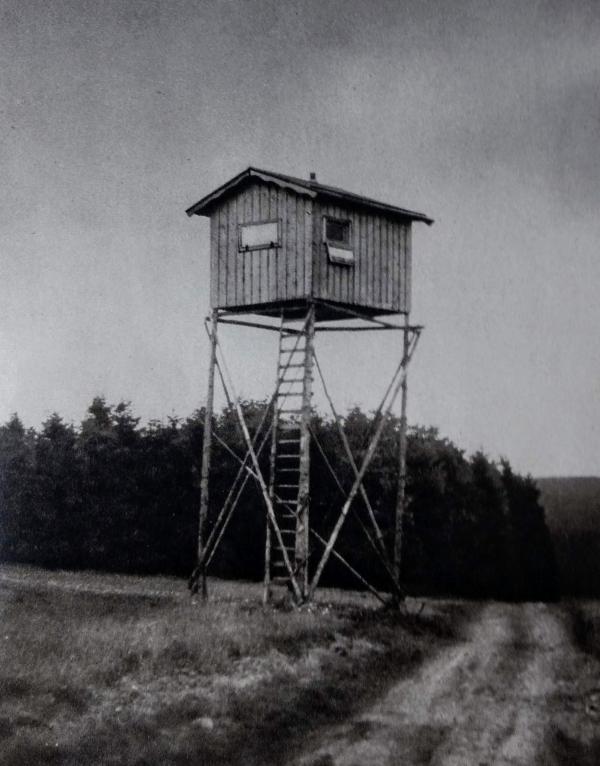
A larger watch tower monitoring the border area - this type of tower often became a 'control centre' for the border guards
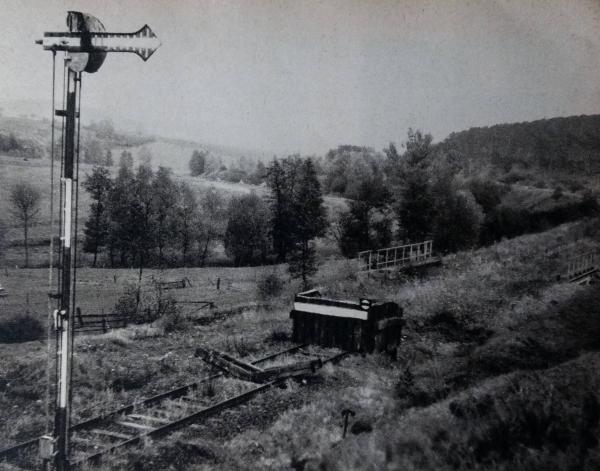
The main Stuttgart-Berlin line now ends at the zonal border in Lower Franconia - the signal indicates 'Stop'
Railway traffic was easy to cut although 'derailers' were often fitted on the eastern side
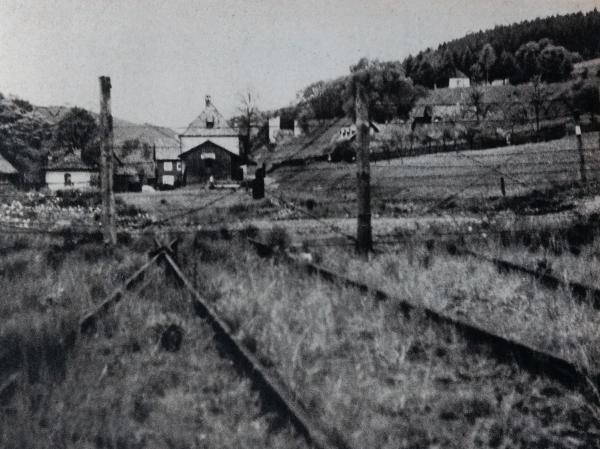
A railway line in the Sonnenberg district stops short of Heinersdorf Station
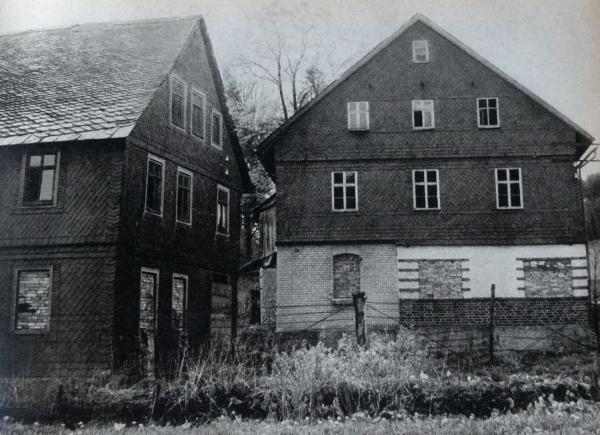
The ground floor windows of these empty properties have been bricked up (the buildings were later demolished)
In some case, the border ran through the middle of a property and an internal brick wall was constructed
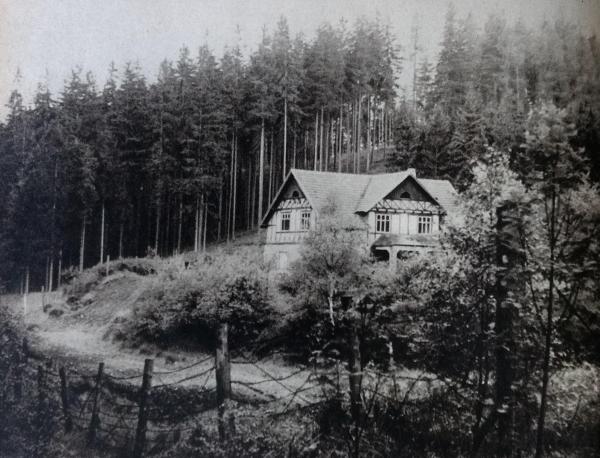
A beautiful country villa that at first glance appears normal - unfortunately, it lies close to the zonal border
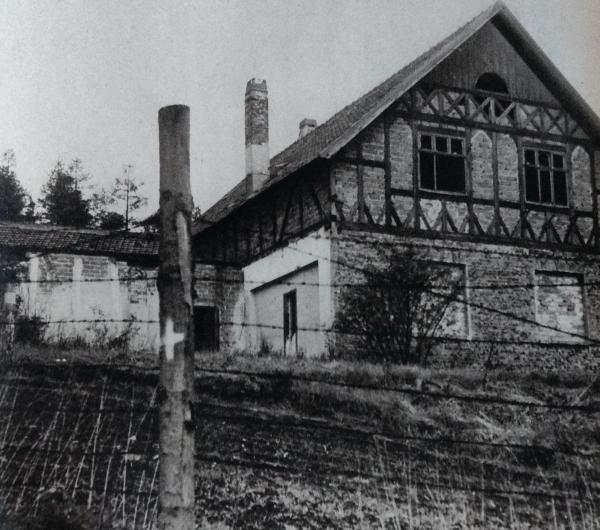
Close up, the picture of desolation and decay is obvious - near Stockheim, Kronach
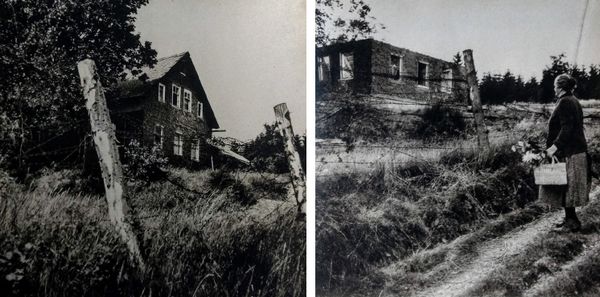
In 1952 the family were given less than one hour to vacate their home
This family headed west and were forced to watch their home decay until, in 1958, the farm was demolished
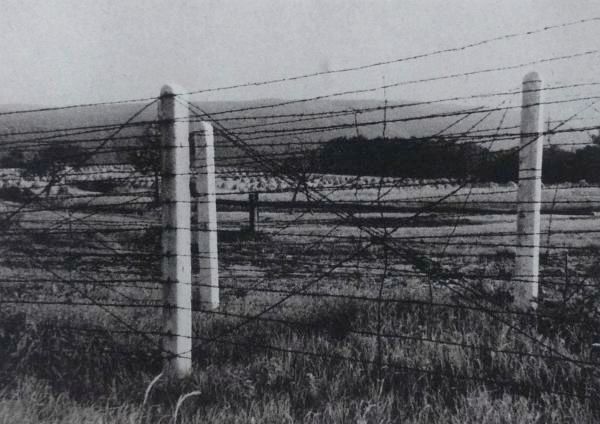
In the Spring of 1958 increasing lengths of parallel fencing mounted on concrete posts were erected - often some distance from the actual border, thus increasing the 'depth' of the border defences
In very sensitive locations, the space between the fences (2-10m) was often filled with coils of barbed wire - in later years, something more sinister replaced the wire
The images on this page are taken from the booklet - 'Mitten in Deutschland' published by the former 'Ministry For All-German Affairs' in January 1959